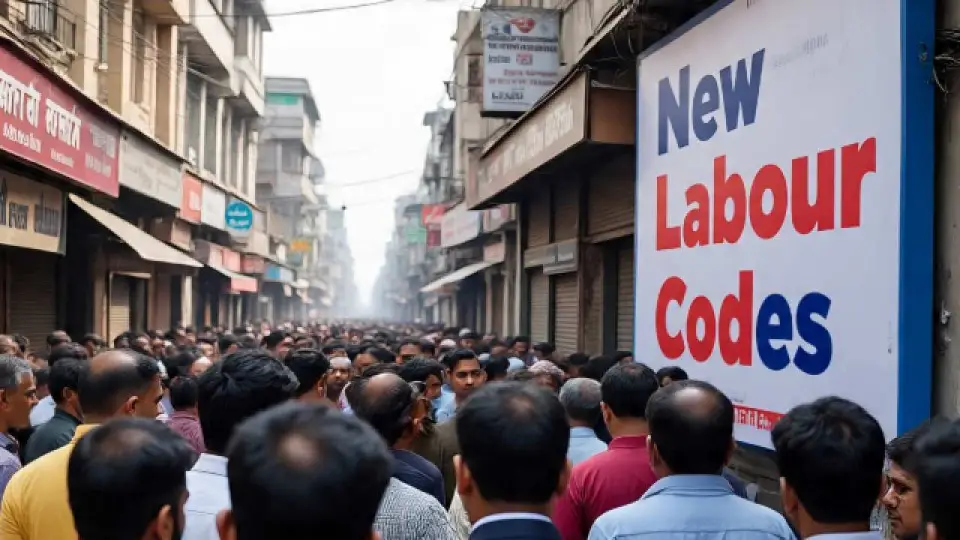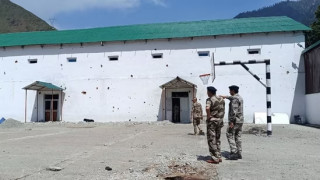
India’s New Labour Codes: A Transformative, Long-Awaited Win for Workers — And Why the Protests Get It Wrong (AI)
New Delhi: India’s labour landscape has undergone a historic and long-overdue transformation through the enactment of the Four Labour Codes—the Code on Wages (2019), Industrial Relations Code (2020), Code on Social Security (2020) and the Occupational Safety, Health and Working Conditions Code (2020).
By consolidating 44 central labour laws and over 100 state laws into just four simplified codes, India has modernized a colonial-era framework that had become heavily fragmented, outdated and ineffective for today’s workforce.
These Codes were drafted after nine tripartite consultations, ten inter-ministerial discussions, and incorporation of 74% of the 233 recommendations of the Parliamentary Standing Committee—making them one of the most widely reviewed labour reforms of independent India.
Despite protests and political noise, a detailed look reveals that the Codes significantly expand protections for the very workers they’re accused of undermining—especially farm workers, informal labourers, migrant workers, gig workers, women, contract workers and platform workers.
Below is a consolidated and clear picture of why these reforms are a big win, and why much of the protest narrative rests on half-truths and misunderstandings.
1. Universal Minimum Wage & Formal Recognition for All Workers
A historic shift: every worker now gets minimum wage rights
The previous system provided minimum wages only to “scheduled employments,” leaving out huge categories of rural and informal workers.
Now:
Every worker—farm labourers, construction workers, domestic workers, gig workers, drivers, delivery agents—is entitled to a minimum wage.
A National Floor Wage ensures no state can go below a basic threshold.
Timely wage payment is now a statutory right.
This is a massive win for farm labourers, seasonal workers and rural migrant workers who were earlier entirely unprotected.
Formal appointment letters for all
The Codes mandate:
Appointment letters for all workers
Formal employment status
Clear record of wages, hours and benefits
For millions who worked without proof or written terms, this is a major shift in power and dignity.
2. Social Security Expanded to Gig Workers, Farm Workers, Informal Workers
For the first time in India’s history, the Codes explicitly include:
gig workers
platform workers
agricultural and rural labourers
contract, daily-wage and temporary workers
self-employed informal labourers
Key features:
Social Security Fund for Gig/Platform Workers
Aggregators like Uber, Swiggy, Zomato must contribute 1–2% of annual turnover.
This fund covers:
health insurance
maternity benefits
disability
accident protection
even funeral assistance
ESIC coverage expanded
Now includes:
small establishments (less than 10 workers)
plantation workers
seasonal establishments
EPF, pension and insurance extended to informal workers
E-Shram portal gives every informal worker a digital identity
This allows access to:
government welfare
insurance
pensions
portability across states
This is a huge leap in social protection, particularly for rural and migratory labour.
3. Strong Protections for Women Workers
The Codes strengthen women’s rights in major ways:
Equal pay for equal work is now a binding legal requirement.
Safe night shifts are allowed with mandatory safety conditions.
Crèche facilities mandatory at or near workplaces.
26 weeks paid maternity leave reaffirmed and extended to more categories.
This significantly boosts opportunities for women in rural work, construction, agriculture, services and gig economy.
4. Long-Due Rights for Migrant Workers
Inter-state migrant workers—among the most vulnerable groups—gain:
Equal wages in destination states
Portability of benefits via Aadhaar-linked UAN
Travel allowance for annual journey home
Coverage under ration, social security and welfare schemes
Registration via simplified database
Earlier, migrant workers fell between state jurisdictions. Now their rights travel with them.
5. Occupational Safety and Free Annual Health Check-Ups
The Occupational Safety Code mandates:
free annual health check-ups for workers above 40
universal standards for workplace safety
better sanitation, rest facilities, drinking water, ventilation
protections for workers exposed to heat, machinery, chemicals, long hours
Farm workers, mandi workers, factory labourers and construction workers stand to benefit immensely.
6. Legal Recognition and Protection for Fixed-Term Workers
Fixed-term workers now get:
same wages as permanent workers
same benefits, leave and medical protections
gratuity after just one year, instead of five
This prevents exploitation of seasonal or short-term workers—especially common in agriculture, plantations and construction.
7. Simplified Laws → Easier Enforcement → Less Exploitation
Earlier, India had a maze of laws—29 central and many state laws—resulting in:
confusion
corruption
weak enforcement
loopholes exploited by contractors
Now, a clear unified system increases transparency, making it easier for workers to claim rights and easier for inspectors to enforce them.
8. Strengthening Worker Voice: Unions & Right to Strike
Contrary to claims:
Trade union recognition is formalized, not weakened.
Right to strike is preserved, but with structured notice periods.
This reduces arbitrary lockouts, and encourages negotiation & fairness.
Data from Rajasthan (which raised retrenchment threshold earlier) shows:
employment increased
retrenchments reduced
The “hire and fire” claim is oversimplified and often misleading.
9. Digital Grievance Redressal & Faster Justice
Workers now get:
Samadhan portal for online complaints
mandatory Grievance Redressal Committees
Industrial Tribunals with timelines
This helps especially:
rural workers
temporary workers
migrant workers
gig workers
who previously had no access to legal mechanisms.
10. Reskilling Fund for Retrenched Workers
Employers must contribute 15 days’ wages to reskill any worker who is retrenched.
This is crucial for:
seasonal workers
contract workers
those shifting sectors
Why the Protest Narrative Misses the Full Picture
Protests are legitimate in democracy, but many objections are misleading:
Myth 1: “Hire and Fire will increase”
Reality: core protections remain intact, including:
minimum wage
social security
PF/pension
gratuity
formal letters
overtime pay
Raising the threshold from 100 to 300 mirrors global norms and helps MSMEs grow—leading to more jobs, not less.
Myth 2: “Working hours will become 12 hours”
Reality:
Weekly cap remains 48 hours
Overtime must be paid at double rate
For agricultural labourers who already work long hours without compensation, this brings formal protection.
Myth 3: “Unions are weakened”
Reality: unions remain protected; recognition is structured.
The Codes only modernize systems that were built for the 1970s, not for gig workers, platform workers or fluid labour markets.
Myth 4: “Only employers benefit”
Reality: the biggest winners are farm workers, informal labourers, and gig workers who previously had zero legal protection.
Myth 5: “Implementation will be weak, so reject the law”
Reality: if implementation is the concern, protests should demand stronger enforcement, not rejection of worker rights.
Final Conclusion: A New Era for India’s Workers
India’s Labour Codes bring:
universal minimum wages
social security for all
protections for gig & platform workers
rights for migrant workers
formalisation for agricultural and rural labour
stronger women’s rights
safer workplaces
health benefits
reskilling for displaced workers
simpler laws and faster justice
These Codes are not anti-worker—they are protection-centred, modern, and long overdue.
They represent an opportunity to uplift India’s most vulnerable workers, not a threat to them.
The right approach is not rejection—but active engagement, enforcement demands, and ensuring the benefits reach those who need them most.













Copyright © 2025 Top Indian News
